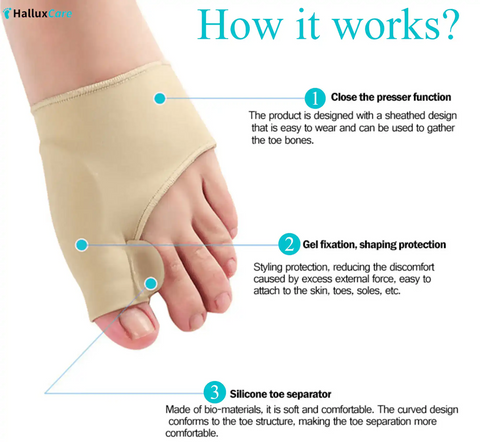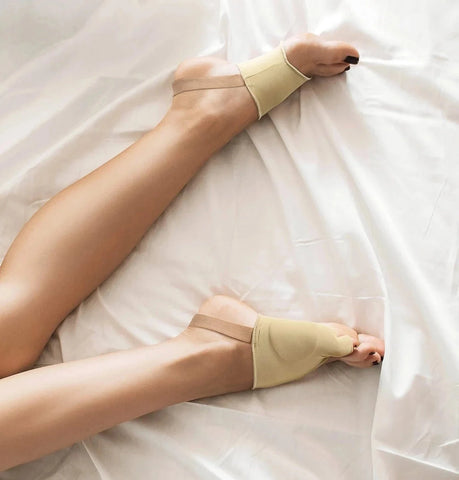Can Bunions Come Back After Lapiplasty? A Deep Dive into Bunion Surgery Success & Alternatives
Last Updated: 2025-10-13
Author: Dr. Samantha Lee, DPM – Board-Certified Podiatric Surgeon
Are you considering Lapiplasty for bunion correction but worried about bunion recurrence? The question, “Can bunions come back after Lapiplasty?” is a frequent concern on Reddit and in bunion support forums. Making an informed decision means understanding all your options—surgical and non-surgical—and the factors that affect long-term success.
What is Lapiplasty?
Lapiplasty is an advanced surgical procedure designed to correct the root cause of bunions—misalignment at the base of the big toe (the first metatarsal–cuneiform joint). Unlike traditional bunionectomies that only remove the bony bump, Lapiplasty uses specialized instrumentation to restore normal bone alignment in all three dimensions. This approach addresses both the visible deformity and the underlying structural issue.
Expert Insight:
According to the American College of Foot and Ankle Surgeons (ACFAS), Lapiplasty aims to permanently stabilize the joint and prevent future shifting, which is often the cause of recurrence with older procedures.
Why Do Some People Swear by Lapiplasty?
- Addresses the underlying deformity: By correcting the metatarsal bone at its base, Lapiplasty targets the source of the problem, not just the cosmetic bump.
- Potentially lower recurrence rates: Recent studies show Lapiplasty may reduce the chance of bunion return compared to conventional osteotomies.
- Quicker recovery: Many patients experience less downtime and a faster return to activity—sometimes walking within days of surgery.
However, as one Reddit user shared, “there is a real chance that the bunion could return.” Why does this happen, even with advanced surgery?
Why Do Bunions Sometimes Come Back After Surgery?
Even the best surgical technology can’t guarantee a bunion won’t recur. Recurrence rates vary between 5–15% for modern Lapiplasty procedures, according to published research. Here’s why bunions might return:
- Incomplete Correction: If the bones and soft tissues are not fully realigned, the bunion may gradually reappear.
- Genetics & Biomechanics: Your inherited foot structure, flat feet, or ligament laxity can contribute to bunion recurrence regardless of surgical method.
- Lifestyle Factors: Returning to narrow, tight, or high-heeled shoes after surgery can increase recurrence risk.
- Focus on Appearance Over Function: Procedures that prioritize cosmetic correction over restoring normal foot mechanics may be less effective in the long term.
4.9 ⭐⭐⭐⭐⭐ ( 1843 reviews )
The Debate: Is Lapiplasty the “Ride or Die” Choice?
Many patients and foot surgeons are enthusiastic about Lapiplasty, but it’s not a universal solution. Here’s what to consider before making your decision:
Pros:
- Restores 3D alignment: Addresses the true anatomical deformity.
- May reduce recurrence: Studies suggest improved outcomes over traditional bunionectomy.
- Faster rehab for many patients: Some people return to regular shoes in 6–8 weeks.
Cons:
- Not suitable for all bunion types: Severe arthritis or complex deformities may require different procedures.
- Recurrence is still possible: No surgery can change your genetics or foot mechanics.
- Surgical risks remain: As with any surgery, risks include infection, nerve damage, delayed healing, and blood clots.
Non-Surgical Bunion Pain Relief Options
If surgery isn’t right for you—or you want to manage symptoms while deciding—non-surgical bunion pain relief can help:
- Orthopedic bunion sleeves: Offer gentle realignment, cushioning, and reduce friction in shoes.
- Toe spacers: Help maintain toe alignment during daily activities.
- Supportive footwear: Choose wide-toe shoes with good arch support to minimize pressure on bunions.
- Topical treatments: Moisturizers and anti-inflammatory creams soothe skin irritation and swelling.
Key Takeaways
- Lapiplasty addresses the root cause of bunions and may lower recurrence rates, but no surgery can guarantee a bunion will never return.
- Genetics, biomechanics, and footwear choices post-surgery all play a role in long-term results.
- Non-surgical bunion relief—including supportive sleeves, toe spacers, and proper shoes—can significantly improve comfort and quality of life, especially for mild to moderate symptoms.
- Consult with a foot and ankle specialist to determine the best approach for your unique foot structure and lifestyle.
Practical Tips & Real-World Applications
- Prioritize shoe choice after surgery: Wear wide, low-heeled, supportive shoes to reduce pressure on the bunion area.
- Incorporate foot exercises: Stretching and strengthening the feet and calves may improve biomechanics and reduce recurrence risk.
- Use bunion sleeves or toe spacers: These can help maintain alignment, especially during long periods of standing or walking.
- Monitor your feet regularly: Early signs of bunion return include redness, pain, or a shifting big toe—address these symptoms early with your doctor.
- Stay active, but listen to your body: Gradually resume activities after Lapiplasty as advised by your medical team.
FAQs
Q: How long does Lapiplasty recovery take?
A: Most patients walk in a boot within days and return to comfortable shoes in 6–8 weeks, but full healing may take several months.
Q: What is the recurrence rate after Lapiplasty?
A: Studies show recurrence rates between 5–15%, depending on individual risk factors and adherence to post-surgical guidelines.
Q: Can I prevent bunion recurrence after surgery?
A: While surgery corrects the deformity, wearing proper footwear, avoiding high heels, and maintaining a healthy weight can reduce the risk of recurrence.
Q: Are there people who shouldn’t get Lapiplasty?
A: Lapiplasty may not be suitable for people with severe arthritis, poor bone quality, or certain medical conditions. Always consult a board-certified foot and ankle surgeon.
Q: Do bunion sleeves really help?
A: Medical-grade bunion sleeves can reduce pain, friction, and mild misalignment, especially when combined with supportive shoes.
Top HalluxCare.com Bunion Relief Products
If you're looking for relief from bunion pain, consider using the Orthopedic Bunion Pain Relief & Correction Sleeve, which provides support and helps to alleviate discomfort.
For additional protection, the Tailor's Bunion Bunionette Pain Relief Protection Sleeves are designed to offer comfort and protection for bunionette pain.
To nourish and soothe the skin around bunions, as well as to promote healthy hair, consider the Jamaica Black Castor Oil Soothing Oil. Known for its moisturizing and anti-inflammatory properties, it helps alleviate discomfort around bunions and supports hair growth and scalp health.
What’s your experience with bunion surgery or conservative treatment? Do you think Lapiplasty is worth the hype, or are there better options for lasting bunion pain relief? Let us know below!
References
- American College of Foot and Ankle Surgeons. (2023). Bunions.
- Ray, JJ. (2023). Outcomes of Lapiplasty Bunion Correction. Foot & Ankle Orthopaedics.
- Mayo Clinic. (2024). Bunions.
- Gougoulias, N. et al. (2022). Recurrence after Lapiplasty. Journal of Orthopaedic Surgery and Research.
- Johns Hopkins Medicine. (2024). Bunion Surgery.
- American Podiatric Medical Association. (2024). Footwear and Bunions.




